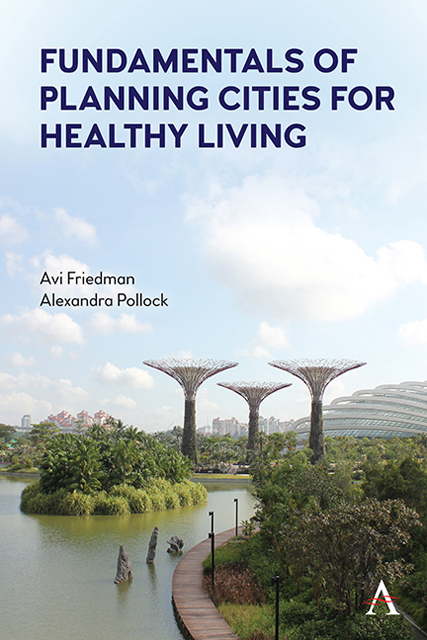Book contents
- Frontmatter
- Contents
- Preface
- Acknowledgments
- Chapter 1 The Broad View
- Chapter 2 Form, Function, and Public Health
- Chapter 3 Planning for Active Mobility
- Chapter 4 Green Open Spaces
- Chapter 5 Active Life in Winter Cities
- Chapter 6 Socializing in Communities
- Chapter 7 Food Production and Distribution
- Chapter 8 Urban Design for Healthy Aging
- Chapter 9 Public and Multi-Unit Residential Buildings and Public Health
- Chapter 10 Healthy Residences
- Chapter 11 Equitable Health Promotion
- Bibliography
- Bibliography for Case Studies
- Illustrations’ Credits
- Index
Chapter 5 - Active Life in Winter Cities
Published online by Cambridge University Press: 10 January 2023
- Frontmatter
- Contents
- Preface
- Acknowledgments
- Chapter 1 The Broad View
- Chapter 2 Form, Function, and Public Health
- Chapter 3 Planning for Active Mobility
- Chapter 4 Green Open Spaces
- Chapter 5 Active Life in Winter Cities
- Chapter 6 Socializing in Communities
- Chapter 7 Food Production and Distribution
- Chapter 8 Urban Design for Healthy Aging
- Chapter 9 Public and Multi-Unit Residential Buildings and Public Health
- Chapter 10 Healthy Residences
- Chapter 11 Equitable Health Promotion
- Bibliography
- Bibliography for Case Studies
- Illustrations’ Credits
- Index
Summary
The cold, long, and dark days of winter in northern communities are known to have a profound effect on people’s mental and physical well-being. This chapter investigates measures taken by cities that experience harsh winters to encourage outdoor activities while keeping people safe. Following the discussion of the challenges that winter poses to health, the chapter transitions into macro and micro-interventions that can be considered when planning winter cities to minimize wind and energy usage among others. Finally, the chapter illustrates the case of Edmonton in the Province of Alberta, Canada as an example of a planned winter city.
5.1 Adopting the Right Mindset for Winter Living
In recent years, the concept of hygge has captured the hearts and minds of people across the world. Hygge is a Danish and Norwegian word used to describe a quality of cozy well-being. The word calls to mind pleasant images of indoor sitting by a fire, enjoying a hot beverage and a book while winter rages outside. The concept brings to mind a human form of hibernation. But as luxurious as it may sound to wait out the winter indoors, the decline in activity during the coldest months of the year has serious mental and physical health repercussions. It is important that cities in the northern hemisphere are designed not for talvitelat (a Finnish word that roughly translates to “being stowed away for the winter”) (Young 2020), but for a hygge lifestyle that includes year-round activity and socialization.
Luckily, the Norwegians have a word for that, too: friluftsliv, which means “embracing the outdoors, regardless of the weather” (Poon 2020). The legacy of this concept is apparent when strolling through a Nordic city. The towns embrace the land’s natural topography. Roof slopes are flattened so snow accumulates on housetops, rather than on the streets below. Buildings are constructed with an emphasis on south-facing windows and doors to maximize sunlight and solar passive heat gain (Figure 5.1). The resulting environment is light-filled and pleasant, even warm. In places with well-planned winter infrastructure, winter is something to welcome, not just to endure. Unfortunately, many northern cities are poorly adapted to the severe climate (Davies 2015).
- Type
- Chapter
- Information
- Fundamentals of Planning Cities for Healthy Living , pp. 59 - 70Publisher: Anthem PressPrint publication year: 2022



